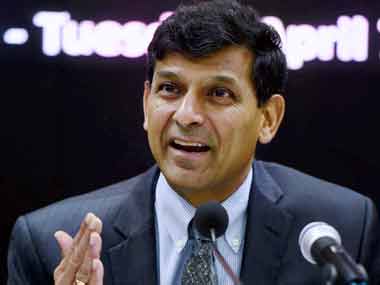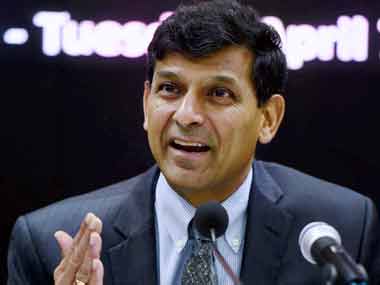Reserve Bank of India governor Raghuram Rajan is about to announce his last policy today. [caption id=“attachment_2943840” align=“alignleft” width=“380”]  Raghuram Rajan. PTI[/caption] The internationally renowned economist, who served at the Indian central bank from September 2013, has had an extremely eventful tenure. In a short span of nearly three years, he took many steps and spoke up about many issues that are considered unconventional. And therein lies his importance. It is indeed difficult to capture his tenure in numbers due to peculiar nature of his interventions, in policy and political matters. However, here is an attempt to get a glimpse of his stint in 5 charts. RBI not only for rate cuts: For those who think central banking is only about cutting rates, Rajan cut repo rate by 150 bps - from 7.25 percent to 6.5 percent. There is section who thinks this too less to spur growth. But the fact is by not cutting rates as much as his detractors wanted him to and taking up many other unconventional steps, to deal with the problems of the economy and banking, he showed that central banking not only about cutting rates. With the common man in inflation battle: From near double digit in September 2013 to bringing it down to just 3.7 percent in July 2015, Rajan waged a battle against inflation. What is significant is that in doing so, he fought the rate-cut lobbyists - the very influential corporates - and stood firmly with the common man. Not only that, he even managed to push the government to take steps to address the supply side problems by insisting that bringing down inflation is a precondition for cutting rates. (With the inflation rearing its head again, Rajan is expected to keep the rates on hold today.) Moreover, he also played the key role in preparing the ground for setting up the Monetary Policy Committee and institutionalising inflation targeting as the primary job of the central bank. The government recently accepted 4 percent, with a 2 percent deviation in either side as the inflation target for next five years, which has been a big win for the RBI. Bank NPAs have shot up and it is good: One of the most important thing that happened under Rajan was the increase in non-performing assets of the Indian banks. From Rs 2.15 lakh crore in Spetember 2013, the gross NPAs have more than doubled to hit a high of Rs 5.4 lakh crore in March 2016. The figure indeed is scary but still it is a good news. The reason is that the steps taken by the RBI is actually bringing out the hidden dirt in the system. The simple logic is that to find a solution to a problem first we should acknowledge that there is one. As Dinesh Unnikrishnan of Firstpost says, “No central bank governor or finance minister has ever addressed the problem of hidden, rotten, bad loans in the banking system.” But Rajan did. He devised a mechanism to recognise the bad loans early on. And he has also given a deadline to banks to clean up their balance sheets - March 2017. Saving the rupee, shoring up forex: Rajan came in at a time when the rupee was badly hit by outflows on account of the taper tantrums of the US Fed. The currency hit a low of 68.80 against the dollar on 28 August. Nearly three years on, it is now at 66.85 (on 8 August) but till strong. The reason definitely is the steps taken by the RBI. As soon as he took over the office, Rajan announced measures to shore up dollar reserves of the country. From a low of $274.8 on 6 September 2013, the reserves have hit a high of $365.5 on 29 July. This is enough to meet the import requirements for about 11 months. That Rajan is at the helm of the central bank has indeed helped boost the investor sentiment for India. It has boosted the inflow. The RBI is now comfortable and confident about the currency.
It is indeed difficult to capture his tenure in numbers due to peculiar nature of his interventions, in policy and political matters. However, here is an attempt to get a glimpse of his stint in 5 charts
Advertisement
End of Article


)

)
)
)
)
)
)
)
)



